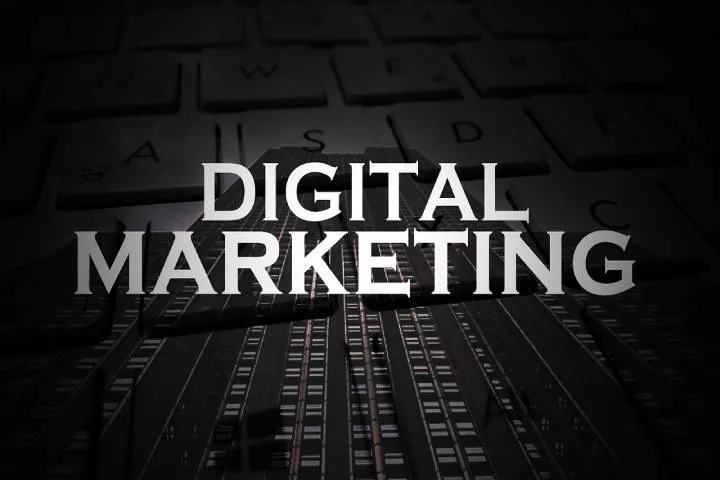Health & Fitness
Data Observability: What is it and Why is it Important?
Data observability is essential for any data-driven organization. Consider investing in data observability to reap these benefits.

Today, data is among a business’s most valuable assets because its insights drive crucial business decisions. This data should be accurate, of high quality, and reliable. While gaining data insights is essential, understanding your data’s health is vital to ascertain that it’s not missing, misused, or wrongly added. Thanks to data observability, your company can manage, track, and identify issues in its data systems and data before causing downtimes.
Table of Contents
A. What is data observability?
Data observability involves a company’s ability to understand its systems and data state fully. With excellent data observability, your organization gets complete visibility into its data pipelines. It also enables teams to create processes and tools to understand data flow in the company and spot data barriers to prevent data inconsistencies and downtimes.
B. Importance of data observability
1. End-to-end data pipeline view
Data observability offers an end-to-end data pipeline view while eliminating data downtime using the pipelines’ best DevOps and observability principles. This means applying to alert, triaging, and automated monitoring to detect and assess data quality and discoverability issues.
Handling a broken data pipeline or data problem can be challenging. When your team doesn’t know that something in the data pipeline broke or the data is altered, they’re likely to jeopardize the experiments, stakeholders’ trust, and analytics’ integrity.
With a data observability platform like Streamdal, your DevOps team can gain an end-to-end data pipeline view while giving them split-second reaction times when things go wrong. It also lets them see beyond performance metrics by giving them answers as to why things are breaking.

2. Insights into data system health and performance
Data observability helps your team to ensure your data’s health by maintaining a constant throb of its volume, distribution, metadata, freshness, and lineage. Companies with many disconnected tools can use observability monitoring to help the IT department gain insights into your system’s health and performance.
One of the core data observability advantages is streamlining root cause analysis. It lets you enable end-to-end data monitoring and visibility across a complex IT architecture for your teams to easily detect data issues and bottlenecks, regardless of their origin.
3. Eliminates inaccurate reporting and analytics risks
Data observability enables businesses to detect irregularities and automatically alert the right users to warnings that might lead to dangerous data events. This can make your company more proactive in handling possible data problems that disrupt your business and develop expensive downstream issues.
4. Increases trust in data for crucial business decisions
While machine learning algorithms and data insights can be beneficial, poor data management and errors can be disastrous for your business. However, data observability allows your company to monitor and track situations quickly, boosting confidence when making data-driven decisions.
5. Ensures data accuracy, quality, reliability, and value
Your data team can use data observability to ensure that data accuracy, quality, reliability, and value aren’t compromised. It can also help them ascertain that data pipelines are not broken. Without a comprehensive data observability strategy, analytics and data teams may struggle to guarantee pipeline reliability and data consistency with an agile and iterative methodology or conduct centered root cause analysis yielding quick and effective solutions.
C. Endnote
Data observability is essential for any data-driven organization. Consider investing in data observability to reap these benefits.
Health & Fitness
The Future of HR Technology in Health Services

As we navigate the currents of digital transformation, the health services sector stands at the precipice of a major shift in Human Resources (HR) technology. With an industry characterized by continuous innovation and high stakes, the future of HR technology in health services promises not only to streamline administrative tasks but also to revolutionize employee experience and patient care. Let’s embark on an exploration of what the future holds for HR technology in the health services sector, combining professional insights with a dash of playful foresight.
Table of Contents
1. Integration Overload to Streamlined Systems
The current landscape of HR technology is often criticized for its fragmented nature, with multiple systems handling different aspects of HR tasks. The future lies in the development of more integrated systems, offering a cohesive user experience. This will not only reduce the administrative burden on healthcare professionals but also provide a unified source of truth for HR data.
2. Prioritizing Employee Wellness
As the frontline warriors in patient care, healthcare professionals’ wellness is paramount. Future HR technologies will offer more sophisticated tools for monitoring and enhancing employee wellness. From stress management programs integrated into HR platforms to real-time health monitoring wearables, these technologies will bring a proactive approach to handling workplace stress and fatigue.
Adopting advanced technological solutions, such as HCM payroll software, can streamline complex payroll operations, ensuring health services organizations manage their workforce effectively. This is crucial for maintaining operational efficiency and allows HR professionals to focus on strategic initiatives that enhance employee satisfaction and patient care.
3. Embracing the Gig Economy
The rise of the gig economy presents another layer of complexity and opportunity in the HR landscape of health services. HR technologies will need to adapt to accommodate the growing number of freelance and part-time healthcare professionals, enabling flexible work arrangements while ensuring compliance and maintaining quality of care.
4. Global Talent Networks
The global nature of health challenges necessitates a more connected and international workforce. HR technology will play a crucial role in facilitating global talent pools, allowing healthcare organizations to source and manage talent from around the world more effectively. This will not only help in addressing local shortages but also in enriching the diversity and expertise of healthcare teams.

5. Personalization at Scale
The mantra of personalized care in health services is extending into the realm of HR technology. Imagine HR systems that not only understand the professional profiles of their employees but also their personal needs and preferences. This could mean adaptive learning platforms for continuous professional development, tailoring educational content to the unique learning pace and style of each healthcare professional.
6. Fostering a Culture of Continuous Learning
The accelerating pace of technological advancement in health services demands a workforce that is continually learning and adapting. The future of HR technology will emphasize support for continuous education and upskilling, making it easier for healthcare professionals to stay ahead of the curve, thereby ensuring the highest standards of patient care in an ever-evolving landscape.
7. Data-Driven Decision Making
In the age of big data, HR technologies are not left behind. Advanced analytics and predictive modeling will become staple features, empowering HR professionals in health services to make informed decisions about workforce management, talent acquisition, and employee engagement strategies. This precision will lead to a healthier workplace environment and improved patient care outcomes.
8. The Rise of AI and Automation
Artificial Intelligence (AI) and automation are set to redefine the everyday tasks of HR departments in health services. From automating routine tasks such as payroll and scheduling to leveraging AI for better talent management and recruitment processes, these technologies promise to free up HR professionals to focus more on strategic initiatives and employee engagement.
9. Securing Sensitive Data
With great power comes great responsibility, particularly when it comes to handling sensitive information. As HR technologies evolve, so too will the capabilities for securing employee data. We can expect advancements in encryption, blockchain technology for verifying credentials and training records, and more robust compliance tools to address the growing web of regulatory requirements in health services.
Conclusion
The future of HR technology in health services is bright, filled with the promise of streamlined operations, enriched employee experiences, and ultimately, superior patient care. As we look towards this future, it’s clear that the intersection of technology and human empathy will continue to drive innovation in health services HR. The path forward is not without challenges, including ensuring data privacy and navigating the complexities of digital transformation. However, the potential for transformative change is immense, promising a new era of efficiency and engagement in health services.

 Instagram3 years ago
Instagram3 years agoBuy IG likes and buy organic Instagram followers: where to buy them and how?

 Instagram3 years ago
Instagram3 years ago100% Genuine Instagram Followers & Likes with Guaranteed Tool

 Business5 years ago
Business5 years ago7 Must Have Digital Marketing Tools For Your Small Businesses

 Instagram4 years ago
Instagram4 years agoInstagram Followers And Likes – Online Social Media Platform





















